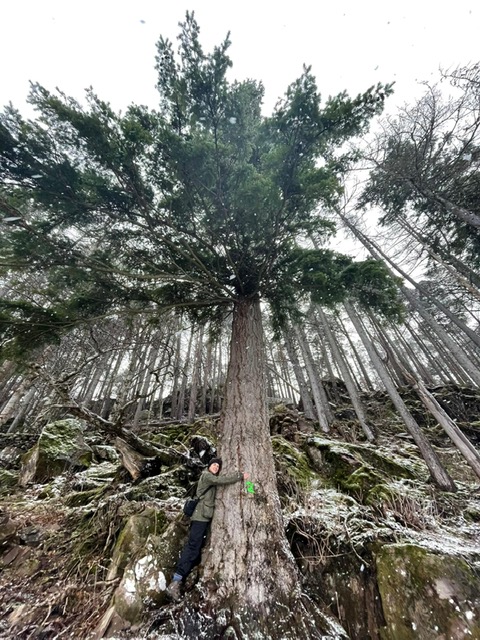
It seems a strange way to begin the story of a new ‘eco house’, with the tale of felling a tree. But in terms of construction, building out of wood is one of the best things you can do for storing and absorbing carbon, and I did hug this tree first…
The new build I am talking about is the new lodge on Ben Damph Estate, to replace the Log House that sadly burned down in 2018.
The Log House was built in 1992 from trees felled on the estate. As a teenager, my father Duncan stayed in log cabins in Norway and always wanted to recreate that experience in Scotland. Some 30 years later, he brought over four French Canadian craftsmen to build the Log House out of 100-year-old Scots pine, Douglas fir and European larch grown on Ben Damph Estate. It was a highly successful holiday home and hunting lodge loved by many for its warmth and ambience, just as Duncan had envisioned.
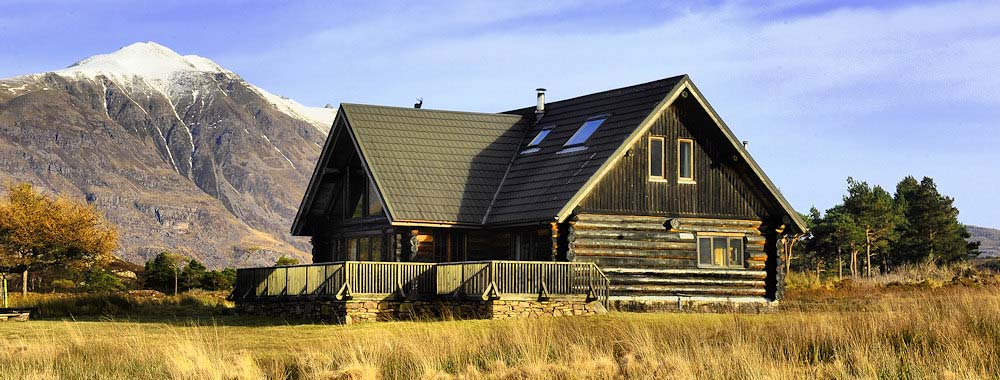
The Log House on Ben Damph Estate

The interior of the Log House on Ben Damph Estate
When my family began the rebuild after the fire, we decided not to build another log house. We all loved it but it was a one-off and instead of trying to recreate it we decided to take forward its best elements. This meant a new house using super-efficient modern materials, such as Super Insulated Panels made principally from Scottish wood and a Scottish timber frame. But also wood from the estate in the timber frame, interiors such as stairs and some external finishes. In this way we hope to make best use of our durable local materials and recreate some of that ambience and warmth.
The new house will be as environmentally friendly as possible, in keeping with the ethos of the whole estate, which is one reason to use wood. Trees absorb carbon over their lifetime and by using them in the build you are keeping that carbon out of the atmosphere for longer. We will also be replanting trees (mostly native trees but also Douglas fir)for every one we take down, ensuring carbon continues to be absorbed. And also to recreate building materials for future generations. For more information on the benefits of wood in construction see the Wood for Good campaign.
We are very lucky to have timber for building on Ben Damph, thanks to the forethought of the Victorians. The Earl of Lovelace, who owned the wider Torridon Estate from the 1860s, planted larch, silver fir and Douglas fir, none of which are native to Scotland. Like many ‘improving landowners’ of his era he was planting the trees both for aesthetic purposes and to provide building materials for future generations.
Some of the trees were relatively new to the country, such as the Douglas fir, named after Scottish botanist and collector David Douglas who, in 1827, sent the first seed from North America back to Britain. The Victorians loved these ‘exotic’ trees and further south in Scotland they have grown to be the tallest trees in the UK.
They also planted rhododendrons, but the less said about that the better…
Families in the area remember the planting of the trees by forestry workers from Canada and some older resident’s grandparents were responsible for planting the Douglas fir 130 years ago.
When we decided to rebuild we wanted to use some of the Douglas fir on the estate, as though it supports wildlife, it is a non-native and in forestry terms it is mature enough to be used for building. The trees are some of the largest on the estate and they are beautiful specimens, especially in the winter. The thick feathery branches hold the snow and the white stands out more against the lighter lime green than the darker Scots pine needles. I guess it must be their North American roots, designed for heavy snowfall in the Rocky Mountains.
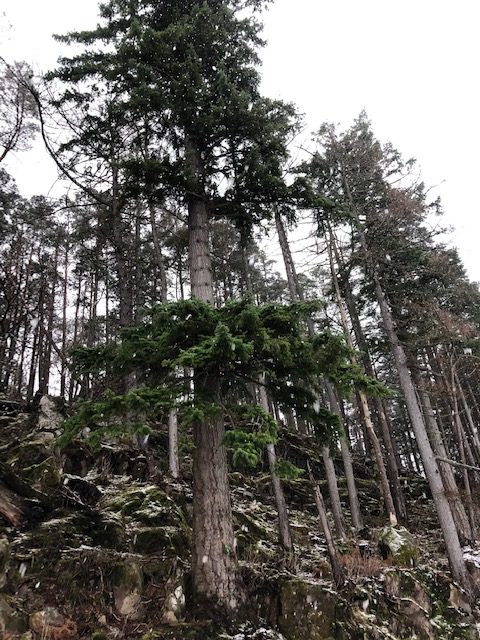
The Douglas fir, native of North America, looks beautiful in the snow.
In late January Magnus Burd, a tree surgeon from Skye, came over to help us bring down the Doug firs. Unusually for Torridon it was snowing so it made it quite a tough day, both in terms of staying warm and safe, and in watching these majestic trees come down in their natural environment.
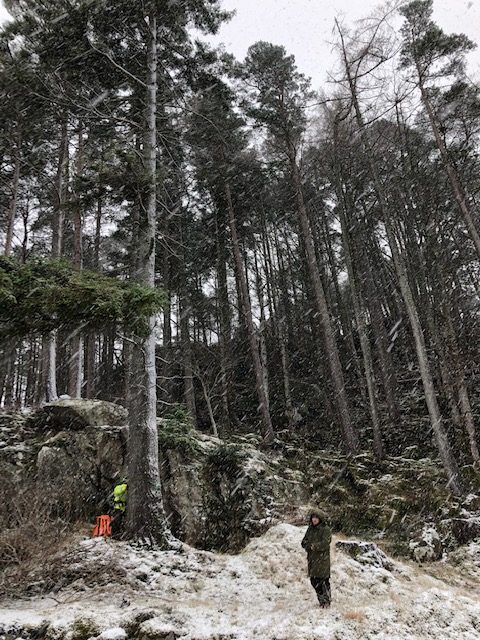
First the forestry team had to assess how the trees would be felled safely in the snow.
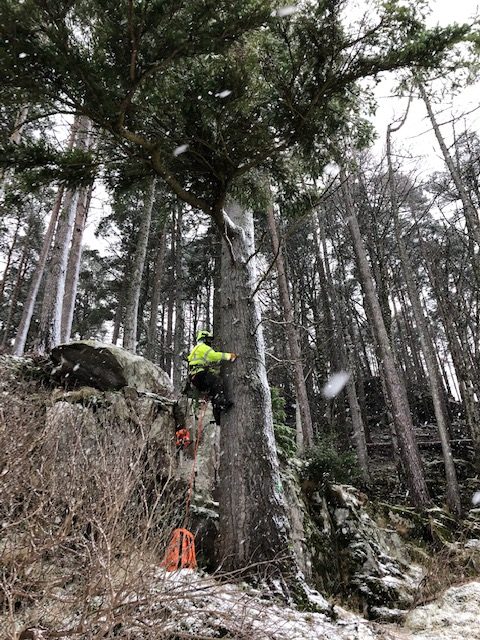
Then the limbs of the Douglas fir had to be removed.
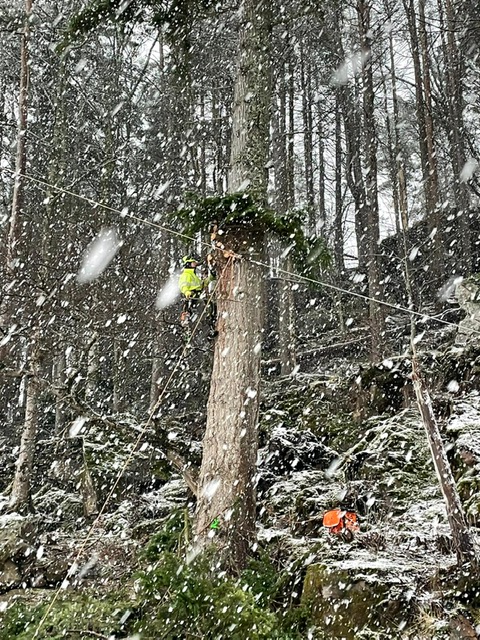
Removing the limbs in the driving snow.

Tree work above Loch Torridon.
When the tree finally came down it was a controlled descent with quite a big flumpf! into the snow.
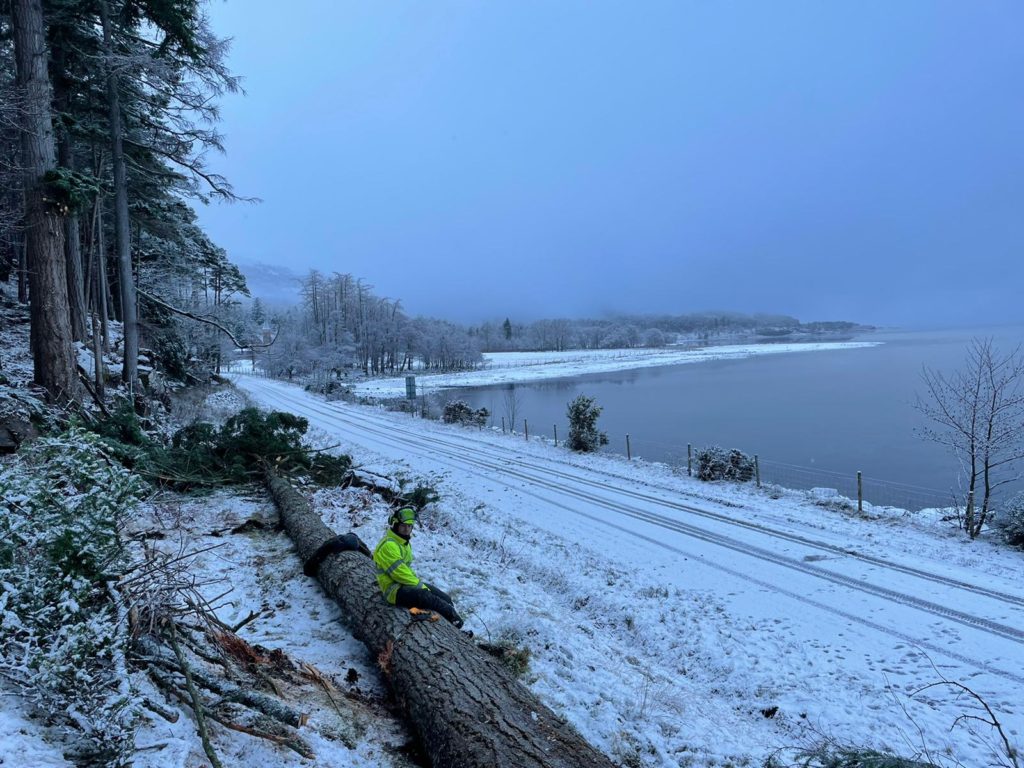
Once the trees were down it was time for a rest.
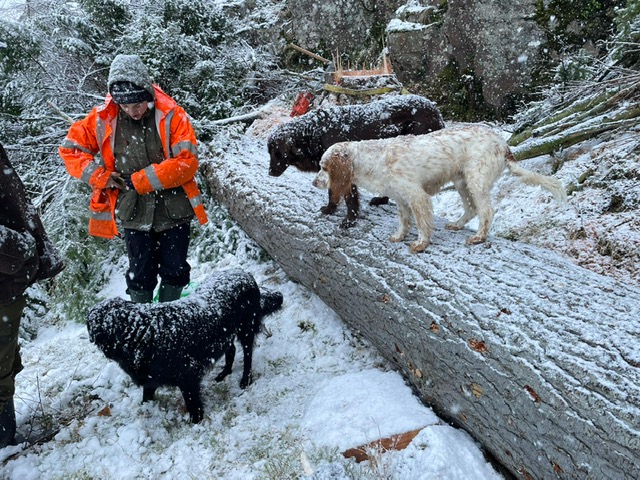
The dogs came to explore what had been happening.
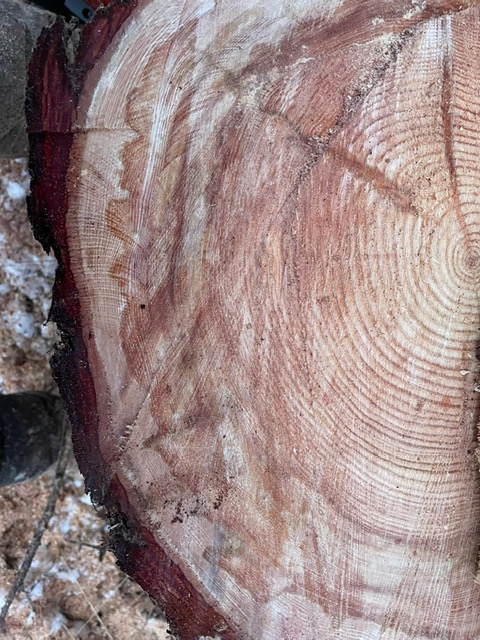
Count the rings! The 130-year-old Douglas fir.
Once the tree came down we could count the rings – all 130 of them! It did feel a little sad to be taking down a tree that has been there that long. But we were comforted by the fact that this was the purpose the trees were planted for and the carbon will be stored in the new build. The wood is beautiful peachy pink and it smells like grapefruit. It is going to be stunning inside the house.
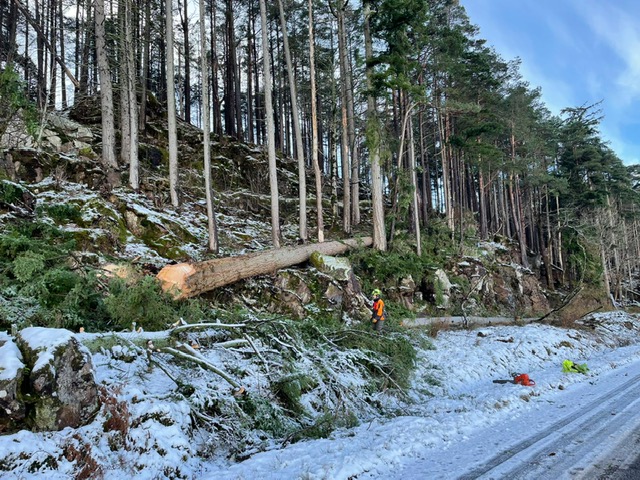
The two felled Douglas fir were at least 70ft tall and 3ft wide.
Larch on the estate has been taken down for the cladding and other building materials for the eco house. The trees were also planted in the Victorian era to provide timber.
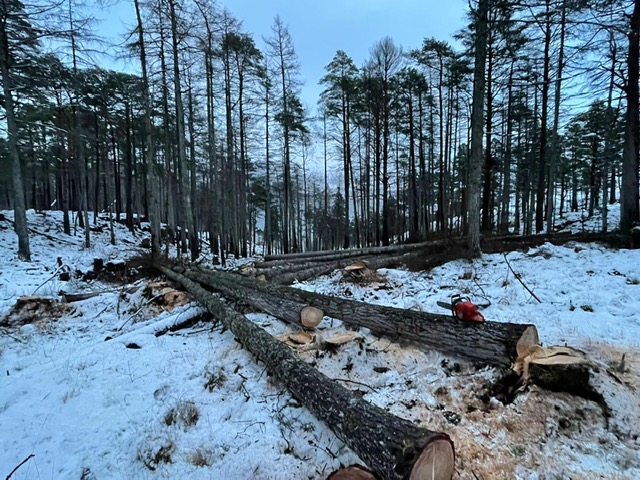
Around 30 larch trees were felled for the cladding.
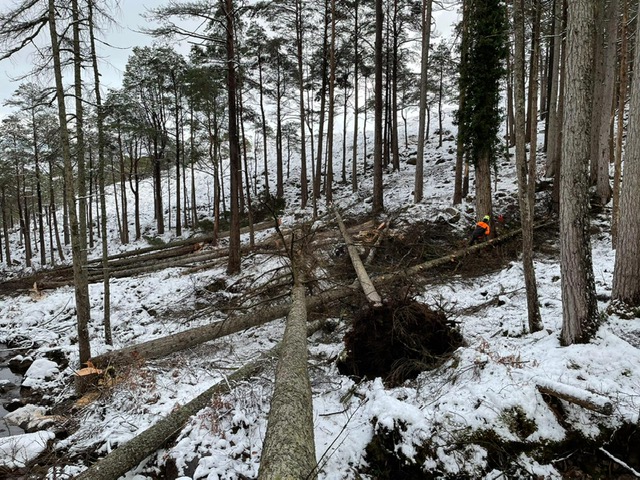
The larch trees are in mixed woodland with Scots pine by Loch Torridon.
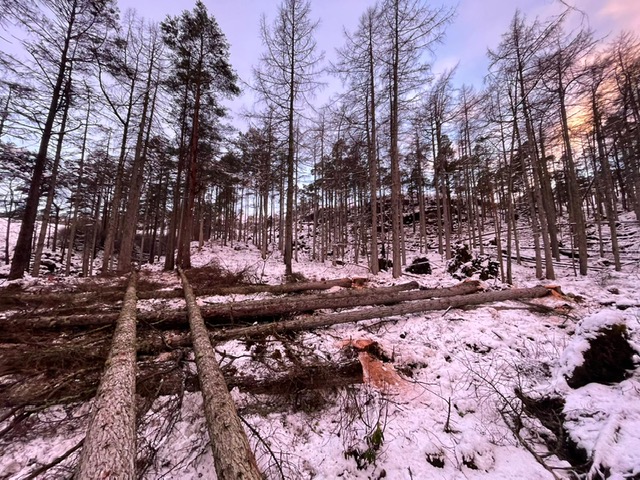
The end of a busy day.
The Douglas Fir has now been sent to Logie Timber to be sawn and dried.
As the build progresses, we will try to share photographs on Ben Damph Estate Facebook page and @bendamph Instagram and Twitter. It is an opportunity to share information on an environmentally friendly self build. Do follow and let us know what you think!
A bonus video of an otter spotted on the day we were felling the trees and the kind of thing we are putting up on social media.

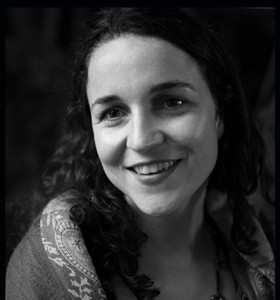
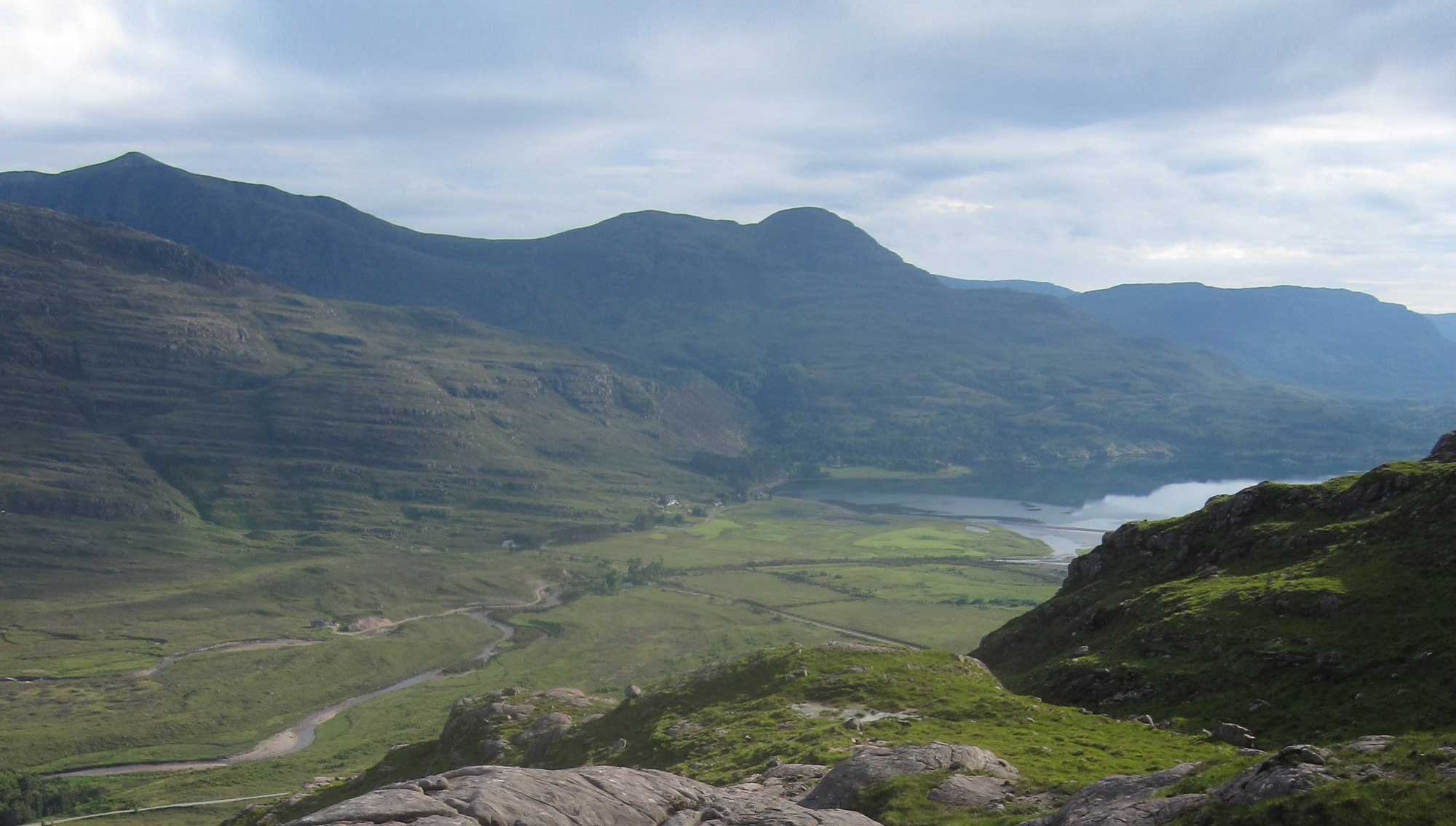
So very impressed by this story.. Well done indeed Louise for taking on this tricky project to replace the much loved and sorely missed Log House with a masterpiece in eco building. Looking forward to seeing the finished project…
Thanks Tony. Can’t wait to show you around…